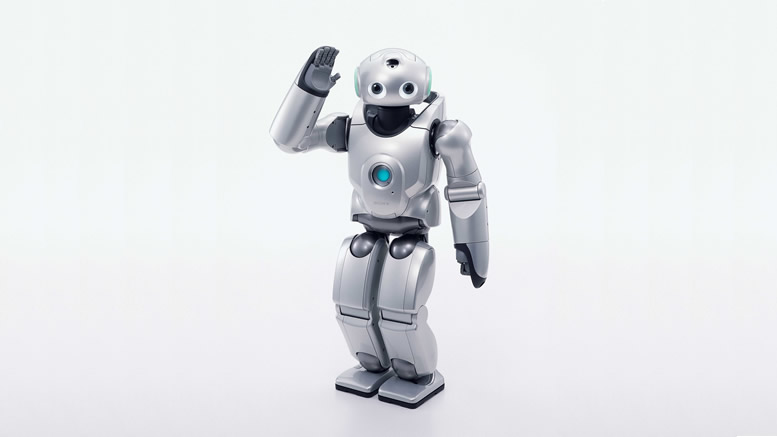
After much excitement after the launch of the robotic dog AIBO, Sony Corporation have announced the development of a prototype small biped entertainment robot. Initially called the Sony Dream Robot, QRIO or SDR-4X can adapt its performance to its environment and situations found in the home to further develop the possibility for a biped-walking robot. Richer communication with people can be realized by a variety of sensor systems, performance control software based on memory and learning, and a flexible biped walking mechanism.
While improving the output performance of small actuators that drive each joint, a newly developed Real-time Integrated Adaptive Control System controls a total of 28 joints in the robot’s body in real time, based on information from various sensors gathered in real time. More advanced movements are realized by enabling biped walk on irregular and tiled surface plus posture retention control under external pressure. In addition, stable and flexible walk can be achieved by the real time production of walking patterns such as pace and rotation angle in accordance with various situations.
Using two CCD colour cameras for image recognition, the SDR-4X can detect the distance between itself and an object by processing the parallax of the two cameras. These cameras allow the robot to perceive the figuration of an object and range between itself and the object to automatically produce a route in order to make its way around the object.
In addition to image recognition, sound recognition, and sound synthesis technologies, communication and movement control technology based on memory is incorporated in the SDR-4X to further enrich communications with people. The SDR-4X can recognize an individual person by detecting the front facial image captured by the colour camera. The robot can also detect the direction of a sound source and recognizes an individual speaking by utilizing 7 microphones located inside its head. By using embedded wireless LAN communication functions, the robot can synchronize data processing with an externally connected PC, which enables continuous speech recognition of many vocabularies.
Information on people and the location of an object obtained through image recognition technology is used as short and long term memory information. Based on this information, the SDR-4X can realize more complicated communication and movements. By inputting music and lyric data into the robot, it can produce a singing voice with vibratos and the composition of emotional, dynamic singing through voice synthesis can be realized to improve the robot’s entertainment quality.
